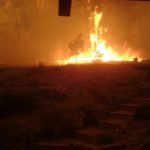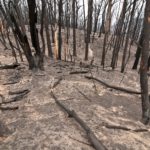Black Saturday Fires in Victoria Australia

The Black Saturday fires, which took place on February 7, 2009, in the state of Victoria, marked Australia’s most devastating bushfires. This tragic event unfolded amid unprecedented bushfire weather conditions, characterized by extreme heat, high winds, low humidity, and severe drought. The combination of these factors intensified the flames, leading to catastrophic consequences.
Regrettably, this calamity resulted in the highest recorded loss of life for a bushfire, and entire towns were obliterated. Globally, it stands as the most severe fire event in history, comparable to the impact of 400 Hiroshima atom bombs. The repercussions of the Black Saturday fires left an indelible mark on both the affected region and the collective consciousness of those who witnessed the magnitude of this unprecedented disaster.
Heat
In the lead-up to Black Saturday, the region experienced a relentless heat wave, with temperatures soaring to an unprecedented 46 degrees Celsius (115 °F) on consecutive days. This scorching heatwave stands as the most severe in the history of Victoria, setting the stage for the catastrophic conditions that fueled the devastating bushfires on that tragic day.
Drought
A profound heatwave unfolded amidst the backdrop of Australia’s most severe recorded drought, often characterized as a once-in-a-millennium event. This drought, marked by minimal to nonexistent rainfall, persisted for the two months leading up to Black Saturday. The unprecedented combination of an intense heatwave and an enduring lack of precipitation created an environment conducive to the devastating bushfires that occurred on that fateful day.
Wind

A significant contributing factor to the intensity of the Black Saturday fires was the powerful and hot winds, exceeding 100 km/h (62 mph). Originating from the expansive Australian outback, the largest desert area globally outside of the Sahara, these winds carried a dry and scorching quality. Subsequently, a shift occurred to gale force southwesterly winds, reaching speeds of up to 120 km/h (75 mph).
This change in wind direction played a pivotal role as it led to the amalgamation of multiple fires into a colossal fire front. The merging fires unleashed an unprecedented combination of speed and ferocity, creating a devastating force that surpassed anything witnessed before. The confluence of these climatic factors contributed to the unparalleled scale and impact of the Black Saturday fires.
Losses

The impact of the Black Saturday fires was tragically profound, resulting in Australia’s highest recorded loss of life from a bushfire event. A total of 173 lives were lost, with approximately 120 individuals falling victim to a single firestorm, widely acknowledged by experts as the epitome of a perfect firestorm.
The devastation extended beyond the loss of lives to the destruction of property and communities. Over 2,030 houses and 3,500 structures were obliterated, and thousands more suffered varying degrees of damage. Entire towns, including Kinglake, Marysville, Narbethong, Strathewen, and Flowerdale, were completely razed, while numerous other towns endured severe damage.
The scale of destruction encompassed an astounding half a million square kilometers, equivalent to the size of a small country. The aftermath of the Black Saturday fires left an enduring mark on both the landscape and the collective memory of the affected communities, highlighting the unprecedented and catastrophic nature of this tragic event.
Lessons
The McArthur Forest Fire Danger Index, a tool for measuring fire weather conditions in Australia, indicated that the levels during Black Saturday surpassed those experienced during both the infamous ‘Black Friday’ event in 1939 and the notorious ‘Ash Wednesday’ event in 1983. This underscored the severity of the conditions that contributed to the catastrophic fires on that tragic day.
The aftermath of Black Saturday prompted a critical reassessment of policies and management practices related to bushfires. The devastating casualty toll and unprecedented destruction highlighted the need for revised and more effective strategies in dealing with such extreme fire events. The lessons learned from Black Saturday have played a pivotal role in shaping and enhancing Australia’s approach to wildfire preparedness, response, and management.